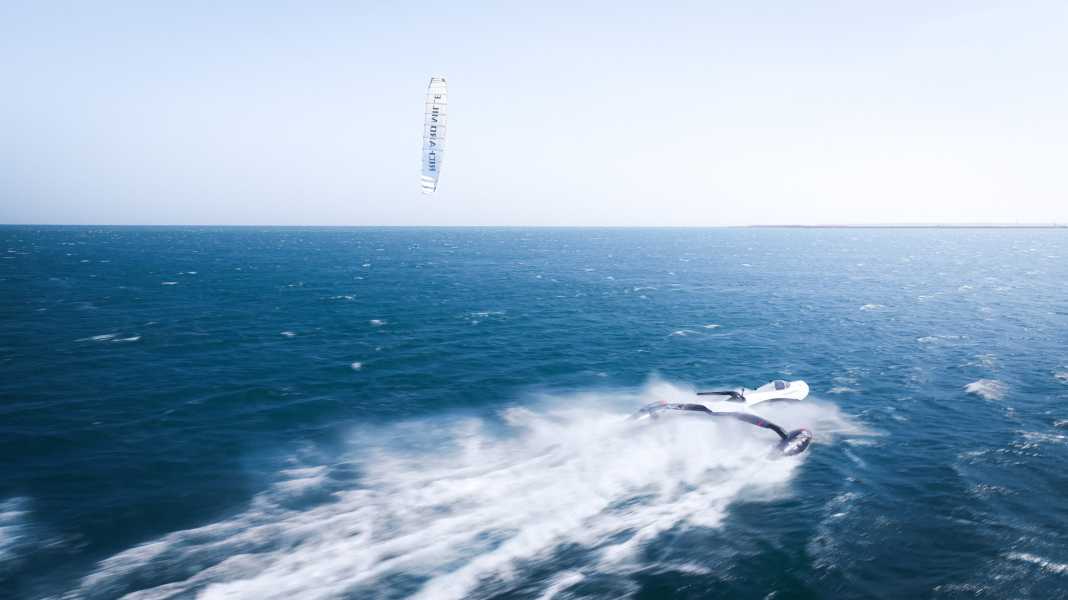
This is mainly due to the fact that the boat was travelling with a foil specially built for lower speeds up to a maximum of 45 knots. The movements and forces of the boat and the control of the paraglider are to be perfected first, and only then will a high-speed foil be built, the production of which is very complex and expensive and should then break the now 12-year-old record of 65.45 knots set by Paul Larsen's "Vestas Sailrocket".
"It was a bit terrifying! We didn't always have full control over 40 knots."
Co-pilot Benoit Gaudiot captured the first plus 40 knot runs of the SP-80 teams summarised: "It was terrifying! We didn't have 100 per cent control over 40 knots, but the feeling was simply incredible. You could tell that the boat wanted to keep accelerating. We had to slow it down so we didn't break anything, but it was super exciting for what was to come!" In contrast to Sailrocket, the SP 80 boat is steered by two people, one controlling the boat and the other the kite. The kite has now been enlarged from Test with a small 12 square metre sail to an impressive 40 square metres.
The summer test campaign enabled the team to collect valuable data and better understand the behaviour of the boat at high speeds.
Now a 55-knot foil is being built
"The foil is the key to breaking the record," explains Benoît Gaudiot, COO and SP80 kite pilot. "We wanted to quickly test a simplified version on the water and learn as much as possible before finalising the design of the record profile, which is more complex and more expensive to manufacture. Now that we have data from the boat at high speeds, we can refine our simulations and start production of the final foil with much more information than we had a few months ago!"
Thanks to the knowledge gained this summer, the boat will return to the shipyard in September to improve the safety systems around the pilots and integrate the new foils, according to the team. The next milestone is to break the 55-knot mark (100 km/h) between October and December.
40 knots doesn't sound like much in times when Americas Cup boats are already touching the 50 knot mark when rounding the buoys, but that's actually where it starts to get really difficult. The big hurdle here is cavitation. With a conventional foil, one side is overpressurised and the other underpressurised. At higher speeds, the negative pressure becomes so great that the vapour pressure of the water is undercut and it evaporates directly on the surface of the profile. This means that part of the foil is no longer working in liquid water, but in water vapour. This leads to a bubble wake, which drastically increases the drag.
In order to reach a speed of more than 60 knots, the Swiss need a completely different shape of profile that is optimised for the speed range, which also means that it works significantly less well in the slow speed range. However, as towing the boat is prohibited, it first has to overcome this difficult area before it can reach the desired speed range. "If our boat can overcome this sound barrier, we can not only compete with the Vestas Sailrocket II, but surpass it," says Xavier Lepercq, the team's chief technician.
It will be interesting to see what the Swiss will achieve with their next foil, which is optimised for 55 knots, and then things will get really serious with the definitive record runs in 2025.
